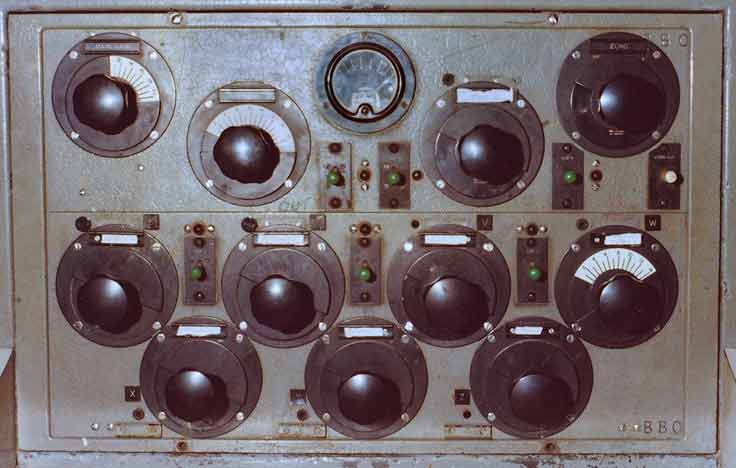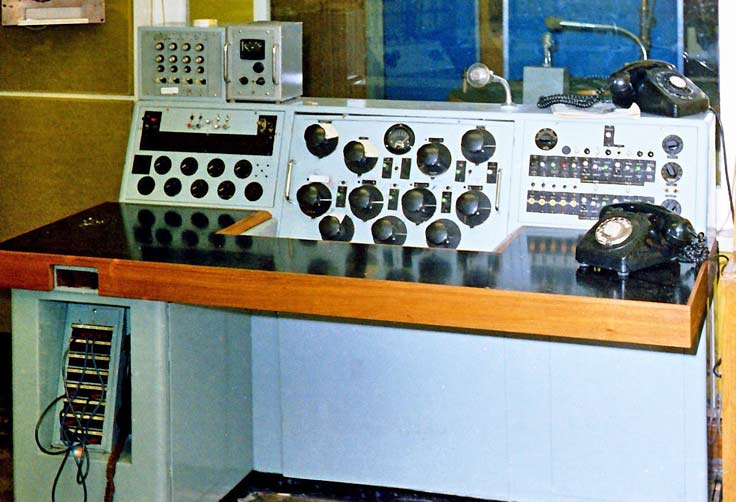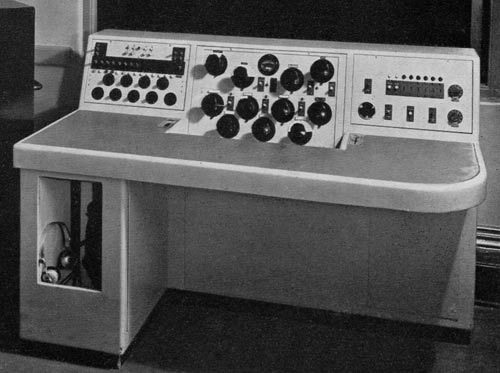
During the war considerable use was made of outside broadcast equipment both in studios and control rooms and much of it was still in use in 1960. A 16-input desk could be quickly wired up using 4 MX/18 mixers and an OBA/8 amplifier. This equipment appears to have made redundant the Dramatic Control Panels that had been used not only for drama but also for other large and complex productions that could not be accommodated by the simple desks in pre-war
Related pages
In 1943/1944 work started on designing post-war studio equipment. It was to have the amplifiers in the studio itself, not in the control room and the output from the studio would be at zero level like OBA/8 equipment not at -70dB as in the pre-war equipment.

Five variants were originally planned:
Mark I for small talks studios with 3 channels.
Mark II for small general purpose studios with 5 channels.
Mark III similar to the Mark II but with a group control and an independent channel.
Mark IV for medium general purpose studios with 5 channels, group control, an independent channel and echo facilities.
Mark V similar to the Mark IV but with 7 channels.
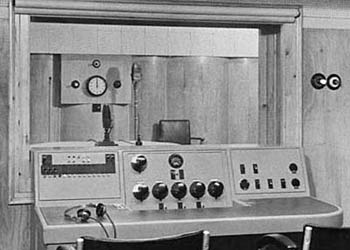
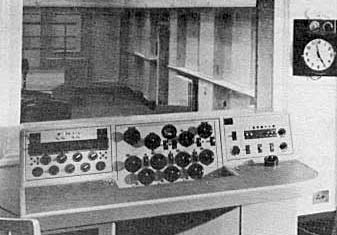
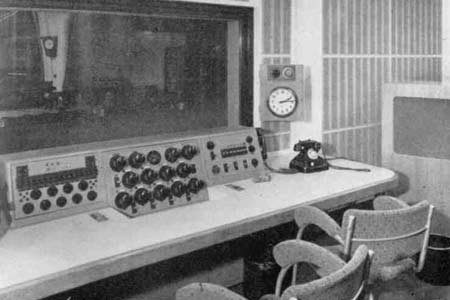
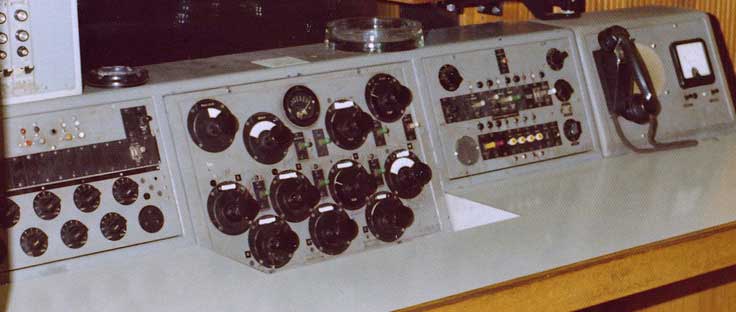
Here are a couple of views of the Mark V in PP1 (PP = Portland Place, a building just across the road from Broadcasting House and opposite what is now the Langham Hotel). These shots were taken in 1977 at the end of the desk's life. A couple of RSAs (Response Selection Amplifiers, what would now be called EQ modules) have been mounted on the left end of the desk and an extension to the right includes the controls and meter associated with an echo plate housed in the lobby linking studio and cubicle. The original removable faders (see next page) have been replaced.
